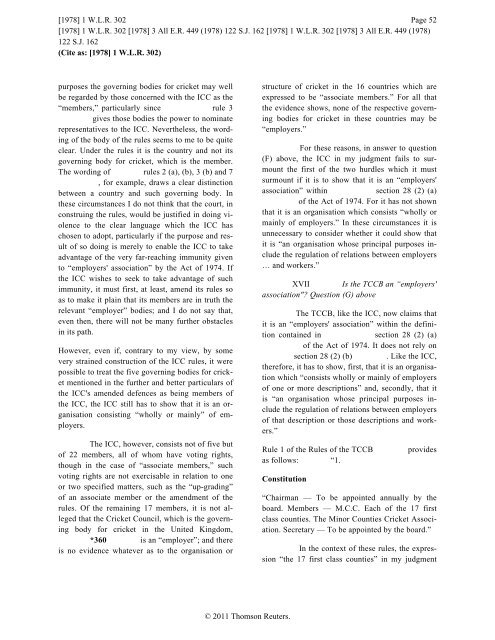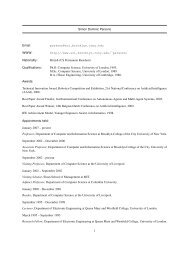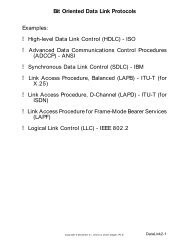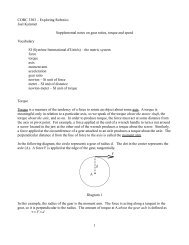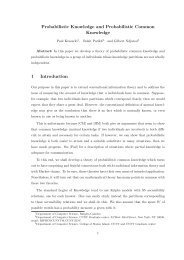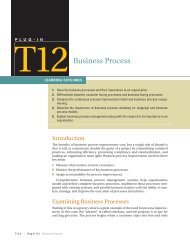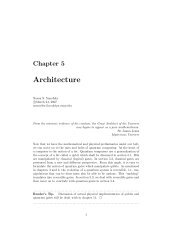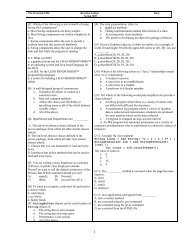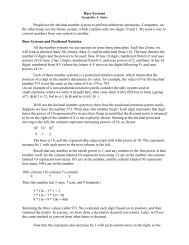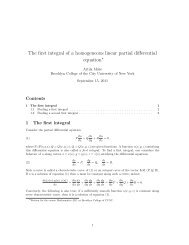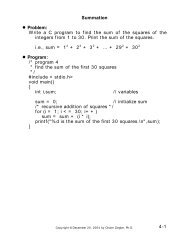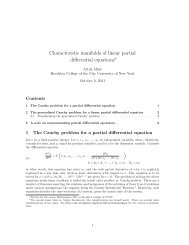*302 Greig and Others v Insole and Others 1977 G. No. 22461977 J ...
*302 Greig and Others v Insole and Others 1977 G. No. 22461977 J ...
*302 Greig and Others v Insole and Others 1977 G. No. 22461977 J ...
You also want an ePaper? Increase the reach of your titles
YUMPU automatically turns print PDFs into web optimized ePapers that Google loves.
[1978] 1 W.L.R. 302 Page 52<br />
[1978] 1 W.L.R. 302 [1978] 3 All E.R. 449 (1978) 122 S.J. 162 [1978] 1 W.L.R. 302 [1978] 3 All E.R. 449 (1978)<br />
122 S.J. 162<br />
(Cite as: [1978] 1 W.L.R. 302)<br />
purposes the governing bodies for cricket may well<br />
be regarded by those concerned with the ICC as the<br />
“members,” particularly since rule 3<br />
gives those bodies the power to nominate<br />
representatives to the ICC. Nevertheless, the wording<br />
of the body of the rules seems to me to be quite<br />
clear. Under the rules it is the country <strong>and</strong> not its<br />
governing body for cricket, which is the member.<br />
The wording of rules 2 (a), (b), 3 (b) <strong>and</strong> 7<br />
, for example, draws a clear distinction<br />
between a country <strong>and</strong> such governing body. In<br />
these circumstances I do not think that the court, in<br />
construing the rules, would be justified in doing violence<br />
to the clear language which the ICC has<br />
chosen to adopt, particularly if the purpose <strong>and</strong> result<br />
of so doing is merely to enable the ICC to take<br />
advantage of the very far-reaching immunity given<br />
to “employers' association” by the Act of 1974. If<br />
the ICC wishes to seek to take advantage of such<br />
immunity, it must first, at least, amend its rules so<br />
as to make it plain that its members are in truth the<br />
relevant “employer” bodies; <strong>and</strong> I do not say that,<br />
even then, there will not be many further obstacles<br />
in its path.<br />
However, even if, contrary to my view, by some<br />
very strained construction of the ICC rules, it were<br />
possible to treat the five governing bodies for cricket<br />
mentioned in the further <strong>and</strong> better particulars of<br />
the ICC's amended defences as being members of<br />
the ICC, the ICC still has to show that it is an organisation<br />
consisting “wholly or mainly” of employers.<br />
The ICC, however, consists not of five but<br />
of 22 members, all of whom have voting rights,<br />
though in the case of “associate members,” such<br />
voting rights are not exercisable in relation to one<br />
or two specified matters, such as the “up-grading”<br />
of an associate member or the amendment of the<br />
rules. Of the remaining 17 members, it is not alleged<br />
that the Cricket Council, which is the governing<br />
body for cricket in the United Kingdom,<br />
*360 is an “employer”; <strong>and</strong> there<br />
is no evidence whatever as to the organisation or<br />
structure of cricket in the 16 countries which are<br />
expressed to be “associate members.” For all that<br />
the evidence shows, none of the respective governing<br />
bodies for cricket in these countries may be<br />
“employers.”<br />
For these reasons, in answer to question<br />
(F) above, the ICC in my judgment fails to surmount<br />
the first of the two hurdles which it must<br />
surmount if it is to show that it is an “employers'<br />
association” within<br />
section 28 (2) (a)<br />
of the Act of 1974. For it has not shown<br />
that it is an organisation which consists “wholly or<br />
mainly of employers.” In these circumstances it is<br />
unnecessary to consider whether it could show that<br />
it is “an organisation whose principal purposes include<br />
the regulation of relations between employers<br />
… <strong>and</strong> workers.”<br />
XVII Is the TCCB an “employers'<br />
association"? Question (G) above<br />
The TCCB, like the ICC, now claims that<br />
it is an “employers' association” within the definition<br />
contained in<br />
section 28 (2) (a)<br />
of the Act of 1974. It does not rely on<br />
section 28 (2) (b) . Like the ICC,<br />
therefore, it has to show, first, that it is an organisation<br />
which “consists wholly or mainly of employers<br />
of one or more descriptions” <strong>and</strong>, secondly, that it<br />
is “an organisation whose principal purposes include<br />
the regulation of relations between employers<br />
of that description or those descriptions <strong>and</strong> workers.”<br />
Rule 1 of the Rules of the TCCB<br />
as follows: “1.<br />
Constitution<br />
provides<br />
“Chairman — To be appointed annually by the<br />
board. Members — M.C.C. Each of the 17 first<br />
class counties. The Minor Counties Cricket Association.<br />
Secretary — To be appointed by the board.”<br />
In the context of these rules, the expression<br />
“the 17 first class counties” in my judgment<br />
© 2011 Thomson Reuters.


